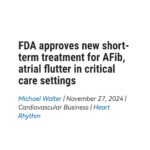
Protocol for the Management of Acute Chest Pain in ER
Protocol for the Management of Acute Chest Pain in ER.
The aim of this protocol is to promote the delivery of timely and evidenced based interventions for the management of chest pain, and to support adherence to the guidelines.
The term ACS covers a range of conditions including unstable angina, ST-segment-elevation myocardial infarction (STEMI) and non-ST-segment-elevation myocardial infarction (NSTEMI).
Follow steps for evaluation of chest pain in ER:
*A-Identify the type of chest pain (cardiac, possibly cardiac ,non-cardiac). Angina, Atypical angina ,Pleuritic,Musculoskeletal),Aortic dissection, Pericarditis). In situations where chest pain is not thought to be cardiac in origin, other causes must be investigated, some of which may be life-threatening (i.e. Pulmonary embolism, Aortic dissection , Pneumothorax, or pneumonia) through taking good “History” from the patient and family where appropriate) & ask about the following to the type of chest pain :
1-Nature and duration of pain
2-Radiation of pain
3-Associated symptoms
4-Risk factors as in Heart pathway.
5-Prior episodes of the same pain and identified cause, known previous vascular disease or CABG.
Angina may present with any of the following:
Typical angina symptoms (pressure-like chest pain / discomfort, central with radiation to jaw, neck, arm/ shoulder or upper abdomen, worse with exertion).
Shortness of breath.
Diaphoresis (sweating).
Nausea and vomiting.
Syncope or pre-syncope (dizziness).
Cardiac ischemia may also present with delirium or an unexplained fallً or atypical presentation in women, DM , or elderlies( above 75yr).
Pain—described as sharp, fleeting, related to inspiration (pleuritic) or position, or shifting locations—suggests a lower likelihood of ischemia. Chest pain of pericarditis increases in the supine position. Chest pain accompanied by a painful, tympanic abdomen may indicate a potentially life-threatening gastrointestinal etiology such as esophageal rupture. PE produces pleuritic C.P. in a setting of DVT or immobilization. Tension Pneumothorax may be accompanied by pleuritic chest pain and unilateral absence of breath sounds. Tenderness to palpation of the costochondral joints may indicate a musculoskeletal cause. Herpes zoster produces a painful rash in a dermatomal distribution. CXR may be indicated to detect alternative cardiac, pulmonary, or other conditions that may cause symptoms, including pneumonia, pneumothorax, or rib fractures. Pleural effusions, pulmonary artery enlargement, and infiltrates may suggest PE, which would need to be confirmed by further testing(D-Dimer, Pulmonay CT or VQ scan).
The following are considered red flags in patients with chest pain necessitating admission:
1-Vital signs in the red or danger zone.
2-Altered mental state or difficult to rouse relative to baseline.
3-The patient has ongoing severe chest pain despite appropriate management.
4-Syncope.
5-Chest pain associated with sudden onset of new neurological deficit.
6-Significant shortness of breath associated with chest pain.
7-ECG findings of new ST elevation or ST depression or new LBBB with chest pain.
*B-Perform focused “Examination”including:
1-Vital signs
2-Focal chest findings such as focal crackles that do not clear with coughing
3-Exclusion of life threatening conditions. Examples of other life threatening conditions as are outlined in Table 1.
Oxygen saturation must be measured using pulse oximetry and supplementary oxygen only administered where an individual’s oxygen saturation (SpO2) is less that 94%.
The aim of treatment is to reach a target oxygen saturation (SpO2) of 94-100% unless the individual has chronic obstructive airway disease (or another risk factor for hypercapnic respiratory failure) in which case aim for a target SpO2 of 88-92%.
*C-Perform an ECG( within first 10 minutes), and consider blood tests to assess haemoglobin, electrolytes, and troponin( preferably 1-3hr hs-cTn, or 3-6hr ; from 3hr up to -6hr conventional cTn ,as most informative time to rule out MI is to take sample of conventional cTn after 3 hrs of onset of C.P.). A normal ECG may be associated with left circumflex or right coronary artery occlusions and posterior wall ischemia, which is often “electrically silent”; therefore, right-sided ECG leads should be considered when such lesions are suspected, and posterior leads V7-9 leads when posterior MI is suspected.
There are important differences in the performance of highly sensitive and conventional cTn assays. hs-cTn assays may be used to guide disposition by repeat sampling at 1, 2, or 3 hours from ED arrival using the pattern of rise or fall (ie, delta). When using conventional cTn assays, the sampling timeframe is extended to 3 to 6 hours from ED arrival.
*D-The presence of any of the following may prompt an escalation to admission :
1-Patient has recurrent chest pain despite management
2-Diagnostic uncertainty or doctors’ preference for admission.
3-Higher risk scores in Heart pathway risk stratification( table2).
4-The emergence of new developments in patient condition , or in assessment or complaint tools that were not previously available or have become increasingly progressive.
Intermediate scores of chest pain patients may be combined with imaging for more precise assessment, or the patients may be admitted , or even discharged with early cardiac follow up at the discretion of the attending physician.
Although discharging low-risk HEART score patients to home is widely accepted as a safe practice, the safety of discharging moderate-risk HEART score patients to home from the ED, with established early cardiology follow-up, was also assessed and found to be safe.
Moderate‐risk HEART score patients may be considered for discharge from the ED with rapid cardiology follow‐up(within 3-7 business days). Formalizing processes to facilitate these early evaluations may represent a viable alternative to hospital admission, without diminishing patient outcomes. (https://pmc.ncbi.nlm.nih.gov/articles/PMC10492236/).
E-Importantly, every minute spent pursuing a STEMI misdiagnosis is a minute lost from treating the underlying concern correctly.
Transfer for reperfusion cardiac cath. across a geographically diverse group of hospitals was associated with performing primary percutaneous coronary intervention within the national goal of ≤120 . Even prehospital Activation of the Cardiac Catheterization Laboratory in ST‐Segment–Elevation Myocardial Infarction for Primary Percutaneous Coronary Intervention is indicated.
*GTN is contraindicated if:
1-Systolic (top) blood pressure is < 100-110 mmHg.
2-Severe anaemia (haemoglobin less than 80).
3-Severe aortic stenosis or obstructive cardiomyopathy.
4-Sildenafil citrate (“Viagra”) or vardenafil administered in previous 24 hours or avanafil in previous 12 hours or tadalafil in prior 48 hours – note for all PDE5 inhibitors a longer interval is required if excretion is delayed due to drug interactions, renal or hepatic impairment – extreme caution is advised.
*Aspirin is contraindicated if:
1-Known hypersensitivity or allergy to aspirin or non-steroidal anti-inflammatory drugs.
2-Aspirin sensitive asthma.
3-Severe active bleeding.
* Antiplatlets used treatment of ACS:
A loading dose of aspirin (150–300 mg p.o. Followed by maintenance 75-100mg daily. In addition to aspirin, a P2Y12 inhibitor is recommend in all patients with ACS, with ticagrelor and prasugrel being the preferred agents, or clopidigrel. For ticagrelor, a loading dose of 180 mg should be given, followed by a maintenance dose of 90 mg twice daily, while for prasugrel, a loading dose of 60 mg is recommended, followed by a maintenance dose of 10 mg once daily. Prasugrel treatment is contraindicated in patients with a history of stroke, and dose adjustments are necessary in those with a body weight of <60 kg and age of ≥75 years. Since both prasugrel and ticagrelor have a superior efficacy, however, this approach should be reserved for selected patients after critical appraisal.
For clopidogrel in NSTEMI/ACS : Administer a 300 mg(4tab) to 600 mg loading dose followed by 75 mg daily, in conjunction with aspirin, ideally for up to 12 months post ACS.
PCI during STEMI or ACS/non-ACS setting: Administer a 600 mg loading dose as early as possible before PCI, followed by 75 mg daily. Ideally, clopidogrel should be administered with aspirin for at least 12 months post-ACS.
STEMI patients receiving fibrinolytic therapy: If the patient’s age is 75 years or younger, then give a 300mg (4tab) loading dose followed by 75 mg daily and u1 year. If the patient is older than 75 years, then the loading dose is omitted. In older patients (≥70 years of age) or patients with an increased risk of bleeding, clopidogrel may be considered as the choice of P2Y12 inhibitor. Of note, there is no adjustment required for renal or hepatic impairment. Avoid
(omeprazole, lansoprazole). Furthermore, Avoid agents that slow down gastrointestinal motility can delay absorption (e.g., opioid agents) in the acute setting.
Heparin Use in ACS:
1-ST-elevation acute coronary syndrome(STEMI) :
– cardiac cath.(Primary PCI in STEMI )becoming the treatment modality of choice if accessible within 120 minutes of presentation and within 12 hours of symptom onset. In patients undergoing primary PCI, the use of parenteral anticoagulation can be divided into pre-hospital and intra-procedural administration.
-In patients who are unable to access primary PCI within this timeframe, the strategy with fibrinolysis and concurrent UFH or LMWH remains the recommended treatment modality.It is routinely used in combination with fibrinolysis in modern-day practice. In STEMI
Patient on fibrinolytics: IV bolus of 60 units/kg (max: 4000 units), THEN 12 units/kg/hr (max 1000 units/hr) as continuous IV infusion
Dose should be adjusted to maintain aPTT of 50-70 sec
2-Unstable Angina/NSTEMI
Initial IV bolus of 60-70 units/kg (max: 5000 units), THEN initial IV infusion of 12-15 units/kg/hr (max: 1000 units/hr)
Dose should be adjusted to maintain aPTT of 50-70 sec.
-Continuous anticoagulation dosage with Intermittent IV injection :8000-10,000 units IV initially, THEN 50-70 units/kg (5000-10,000 units) q4-6hr . LMWH dosage like enoxaparin is 1mg/kg S.C q12hrs .
Strict monitoring of anticoagulation is necessary with both UFH and LMWH in the presence of renal insufficiency, and a close monitoring using aPTT or anti-factor Xa-assays. UFH is preferred in renal impairment.
1-https://aci.health.nsw.gov.au/ecat/adult/chest-pain
2-https://pmc.ncbi.nlm.nih.gov/articles/PMC5462108/
3-https://www.ahajournals.org/doi/10.1161/CIR.0000000000001029
4-https://www.cem.scot.nhs.uk/adult/chestpainrah.pdf
5-https://www.health.qld.gov.au/clinical-practice/guidelines-procedures/clinical-pathways/residential-aged-care-clinical-pathways/all-pathways/chest-pain



